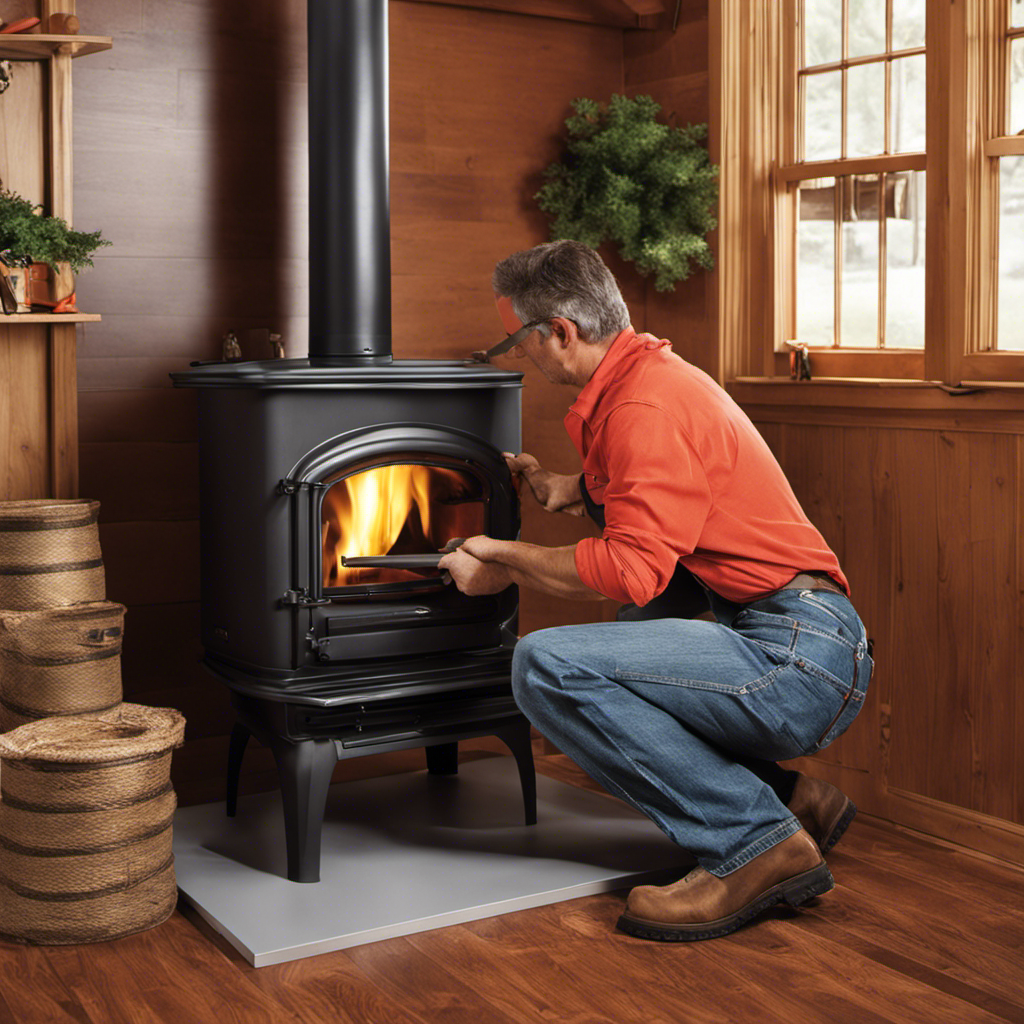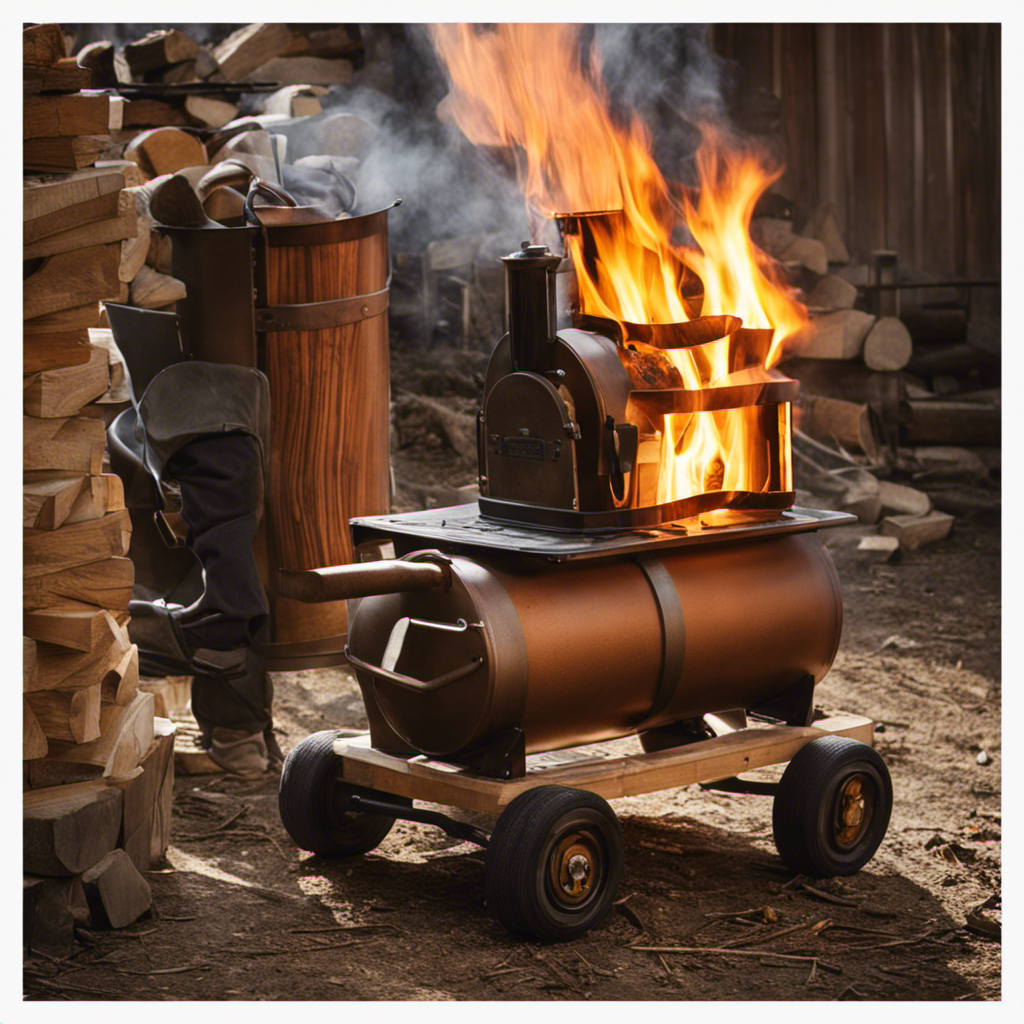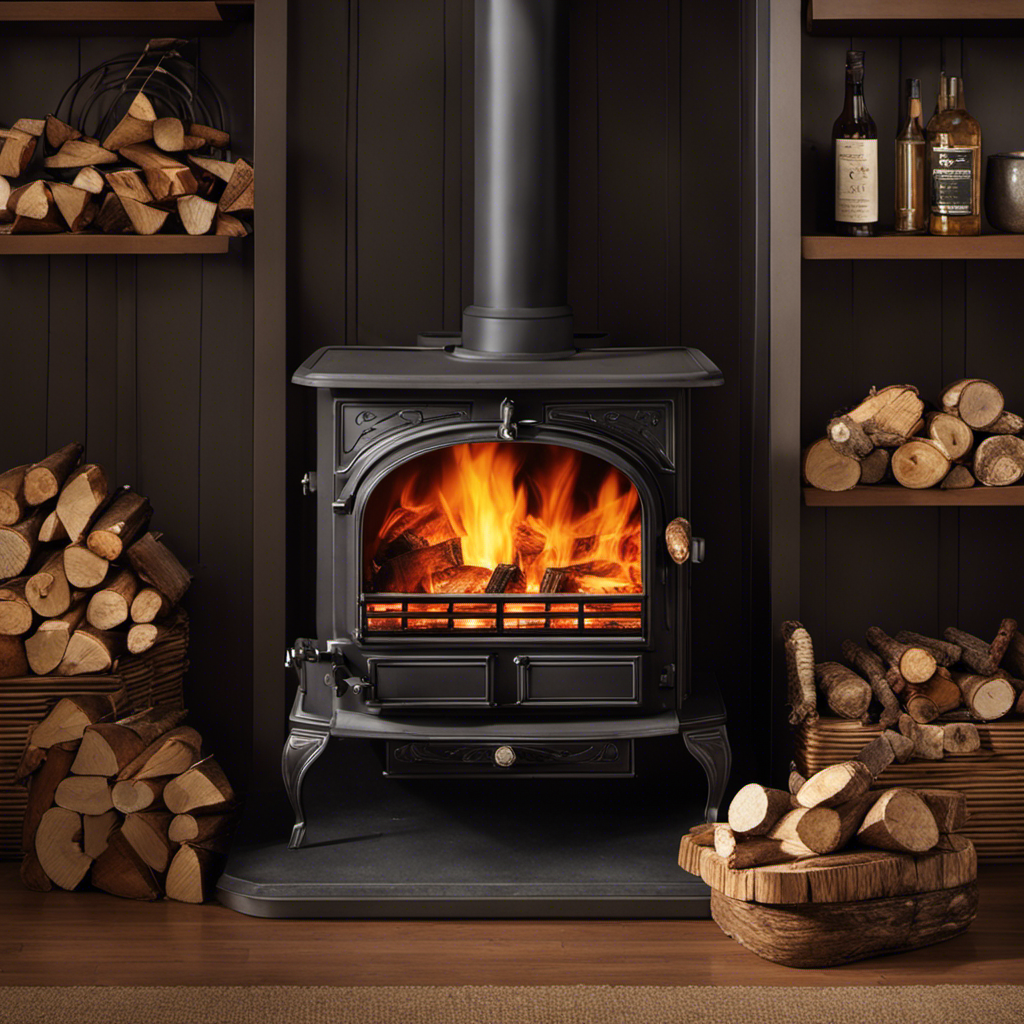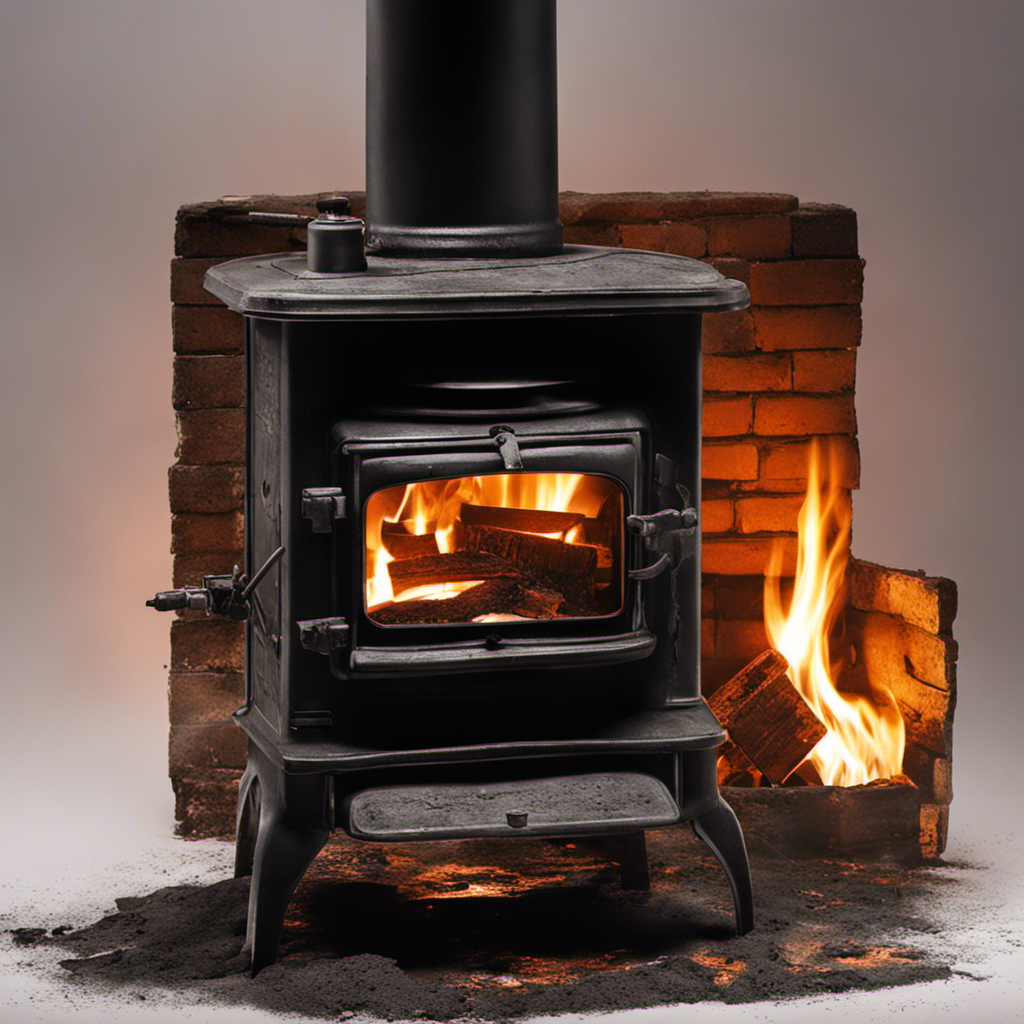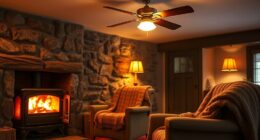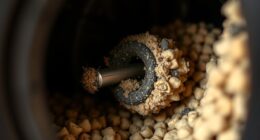As an enthusiast of do-it-yourself projects, I’ve discovered that fitting a wood stove pipe can significantly improve the efficiency and coziness of your living space. Therefore, if you’re prepared to take on this project, let’s begin.
In this guide, I’ll walk you through the necessary steps to select the right pipe size, gather the tools and materials, prepare the installation area, and connect the pipe to your stove.
By the end, you’ll have a well-installed wood stove pipe that will keep you cozy all winter long.
Key Takeaways
- Consider the size specified by the manufacturer and determine the size compatible with your wood stove.
- Use insulation materials like fiberglass or ceramic insulation for proper insulation.
- Gather the necessary tools and materials such as a tape measure, chimney brush, pipe sections, elbows, connectors, and high-temperature sealant.
- Prepare the installation area by measuring the space, cleaning the area, checking for structural issues, and removing dust and loose materials.
Selecting the Right Wood Stove Pipe Size
I think the right wood stove pipe size is crucial for proper installation. When it comes to choosing the correct wood stove pipe material, there are a few factors to consider. First and foremost, you need to determine the size of the stove pipe that’s compatible with your wood stove. This is usually specified by the manufacturer and can vary depending on the model and size of your stove. It’s important to follow these guidelines to ensure efficient and safe operation.
In addition to selecting the right size, understanding the importance of proper insulation during installation is essential. Insulation helps to keep the heat inside the pipe and prevents it from escaping into the surrounding walls or ceiling. This not only increases the efficiency of your wood stove but also reduces the risk of fire hazards. Insulation materials such as fiberglass or ceramic insulation can be used to line the pipe and provide a barrier between the hot flue gases and the surrounding structure.
Gathering the Necessary Tools and Materials
To get started, I’ll need a few essential tools and materials for the wood stove pipe installation. Here’s a handy checklist to ensure I’ve everything I need before beginning the installation:
-
Tape measure: This will help me accurately measure the length of the pipe and determine the correct dimensions for the installation.
-
Chimney brush: A chimney brush is necessary to clean any debris or soot from the chimney flue before installing the pipe.
-
Pipe sections: I’ll need the appropriate number and length of pipe sections to reach from the wood stove to the chimney flue.
-
Elbows and connectors: These fittings will allow me to navigate around obstacles and create a secure connection between the pipe sections.
-
High-temperature sealant: A heat-resistant sealant is crucial for ensuring a tight seal between the pipe sections and connectors.
-
Screwdriver or wrench: This will be needed to tighten the connectors and secure the pipe sections in place.
-
Safety goggles and gloves: Safety is paramount during installation, so I’ll need these protective gear to shield my eyes and hands from potential hazards.
Preparing the Installation Area
The area around the chimney needs to be cleared of any debris or obstructions before beginning the installation. It is important to have a clean and safe space to work in. To prepare the installation area, start by measuring the space where the wood stove pipe will be installed. This will help determine the length of pipe needed and ensure a proper fit. Next, thoroughly clean the area around the chimney. Remove any dust, dirt, or loose materials that may interfere with the installation process. It is also important to check for any structural issues, such as cracks or damage, that may need to be addressed before proceeding. Once the area is measured and cleaned, it is ready for the installation to begin.
| Measure the Installation Area | Clean the Installation Area |
|---|---|
| Measure the space | Thoroughly clean the area |
| Determine length of pipe | Remove dust and dirt |
| Ensure proper fit | Check for structural issues |
Installing the Wood Stove Pipe Through the Ceiling
As I position the pipe through the ceiling, I ensure it fits securely and aligns properly with the chimney. Installing wood stove pipe vertically is a crucial step in the process of setting up a wood stove. It allows for efficient ventilation and proper removal of smoke and gases from the stove.
Before installing the pipe, it’s important to measure the distance between the stove and the ceiling to determine the length of the pipe needed. Once the measurements are taken, I carefully attach the pipe to the stove collar using screws or clamps. I make sure the connection is tight to prevent any leaks.
Next, I insert the pipe through the ceiling hole, ensuring it’s straight and aligned with the chimney above. To secure the pipe, I use brackets or straps to hold it in place. This prevents any movement or sagging, which could cause blockages or damage to the pipe.
Insulating the wood stove pipe is another important step. It helps to prevent heat loss and protects the surrounding materials from excessive heat. I wrap the pipe with insulation material, such as fiberglass or mineral wool, making sure to cover all exposed areas. This insulation helps to maintain the temperature of the flue gases and improves the overall efficiency of the wood stove.
Connecting the Wood Stove Pipe to the Stove
When connecting the pipe to the stove, I ensure a tight and secure connection to prevent any leaks. This step is crucial in maintaining the safety of the wood stove installation.
Here are the steps I follow to ensure a proper connection:
-
Inspect the pipe: Before connecting the pipe, I thoroughly inspect it for any damages or defects. I check for any signs of rust, cracks, or holes that could compromise the integrity of the pipe.
-
Clean the pipe and stove: It’s important to clean both the pipe and the stove before making the connection. I remove any dirt, debris, or soot that may have accumulated, ensuring a clean surface for the connection.
-
Apply high-temperature sealant: To ensure a tight and secure connection, I apply high-temperature sealant to the end of the pipe that will be inserted into the stove. This sealant helps to prevent any air or smoke leaks.
-
Secure the connection: After applying the sealant, I firmly insert the pipe into the stove’s flue collar. I make sure the connection is tight and secure by using screws or clamps, depending on the specific stove’s requirements.
Inspecting and Testing the Wood Stove Pipe Installation
To ensure the safety of my installation, I inspect and test the wood stove pipe connection for any leaks or damages. Testing the wood stove pipe is crucial to prevent any potential hazards and ensure efficient operation.
One common mistake during installation is failing to properly secure the pipe sections together. This can result in gaps or loose connections, which can lead to leaks and the release of harmful gases into the living space.
To begin the inspection, I first visually examine the entire length of the pipe for any signs of damage, such as cracks, dents, or rust. I also check for proper clearances from combustible materials, as specified by the manufacturer’s guidelines. Next, I ensure that the pipe is securely fastened at all joints using appropriate connectors, such as screws or clamps.
After the visual inspection, I move on to testing the wood stove pipe for leaks. I use a smoke tester or a smoke pencil to detect any air leaks along the pipe joints. By directing the smoke towards the joints, I can easily identify any areas where smoke escapes. If any leaks are detected, I promptly address them by tightening the connections or replacing damaged sections.
Frequently Asked Questions
How Do I Determine the Appropriate Height for My Wood Stove Pipe Above the Roofline?
To determine the appropriate height for my wood stove pipe above the roofline, I need to consider roofline safety. It’s important to ensure that the smoke and gases from the stove are properly vented and don’t pose a risk to the roof or nearby structures.
The specific height requirement may vary depending on local building codes and regulations. I recommend consulting with a professional or referring to the manufacturer’s guidelines for the specific wood stove you’re installing.
Can I Use a Different Type of Pipe Material, Such as Stainless Steel, Instead of the Recommended Black Steel Pipe?
I can understand the temptation to use a different type of pipe material, like stainless steel, for your wood stove installation. While stainless steel may seem like a more durable option, it’s important to consider the pros and cons.
Black steel pipe is specifically designed for wood stove use, offering better heat resistance and durability. Stainless steel may not perform as well under high temperatures and could potentially warp or crack.
It’s always best to stick with the recommended black steel pipe for optimal safety and performance.
Are There Any Local Building Codes or Regulations That I Should Be Aware of Before Installing a Wood Stove Pipe?
Before starting my wood stove pipe installation, I made sure to research the local building codes and regulations. It’s crucial to comply with these guidelines to ensure safety and avoid any legal issues.
I contacted my local building department and they provided me with the specific requirements for wood stove pipe installation in my area. By following these regulations, I can confidently proceed with my project and enjoy the warmth of my wood stove without any concerns.
Can I Install a Wood Stove Pipe Through a Wall Instead of the Ceiling?
I’ve always been curious about alternative ways to install a wood stove pipe.
Recently, I discovered that it’s possible to install it through a wall instead of the ceiling.
This method has its advantages, such as easier access for maintenance and cleaning.
Additionally, it can be a more aesthetically pleasing option, as the pipe can be concealed within the wall.
Overall, installing a wood stove pipe through a wall can be a practical and visually appealing choice.
How Often Should I Clean and Maintain My Wood Stove Pipe to Ensure Its Safe and Efficient Operation?
To ensure the safe and efficient operation of my wood stove pipe, I need to clean and maintain it regularly. The cleaning frequency depends on how often I use the stove, but a general guideline is to clean it at least once a year.
Some maintenance tips include checking for creosote buildup, inspecting for any leaks or damage, and making sure the pipe is properly secured.
Regular cleaning and maintenance will help prevent potential hazards and keep the stove running smoothly.
Conclusion
In conclusion, installing a wood stove pipe requires careful consideration of the right size, gathering the necessary tools and materials, and preparing the installation area.
By following the correct steps, such as installing the pipe through the ceiling and connecting it to the stove, you can ensure a safe and efficient wood stove system.
For example, John successfully installed a wood stove pipe in his cabin, and now enjoys cozy and cost-effective heating throughout the winter months.
Growing up surrounded by the vast beauty of nature, Sierra was always drawn to the call of the wild. While others sought the comfort of the familiar, she ventured out, embracing the unpredictable and finding stories in the heartbeat of nature.
At the epicenter of every remarkable venture lies a dynamic team—a fusion of diverse talents, visions, and passions. The essence of Best Small Wood Stoves is crafted and refined by such a trio: Sierra, Logan, and Terra. Their collective expertise has transformed the platform into a leading authority on small wood stoves, radiating warmth and knowledge in equal measure.

